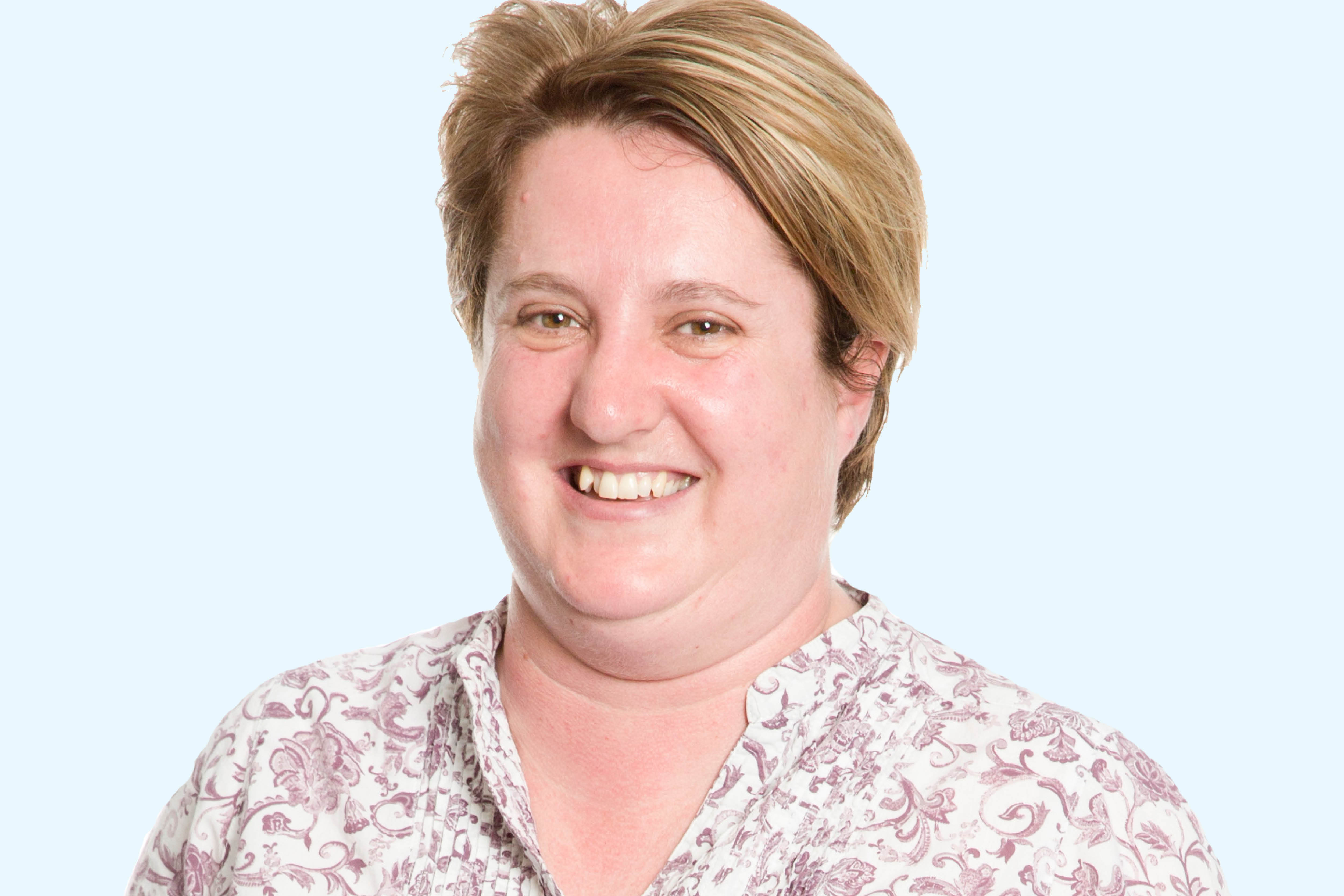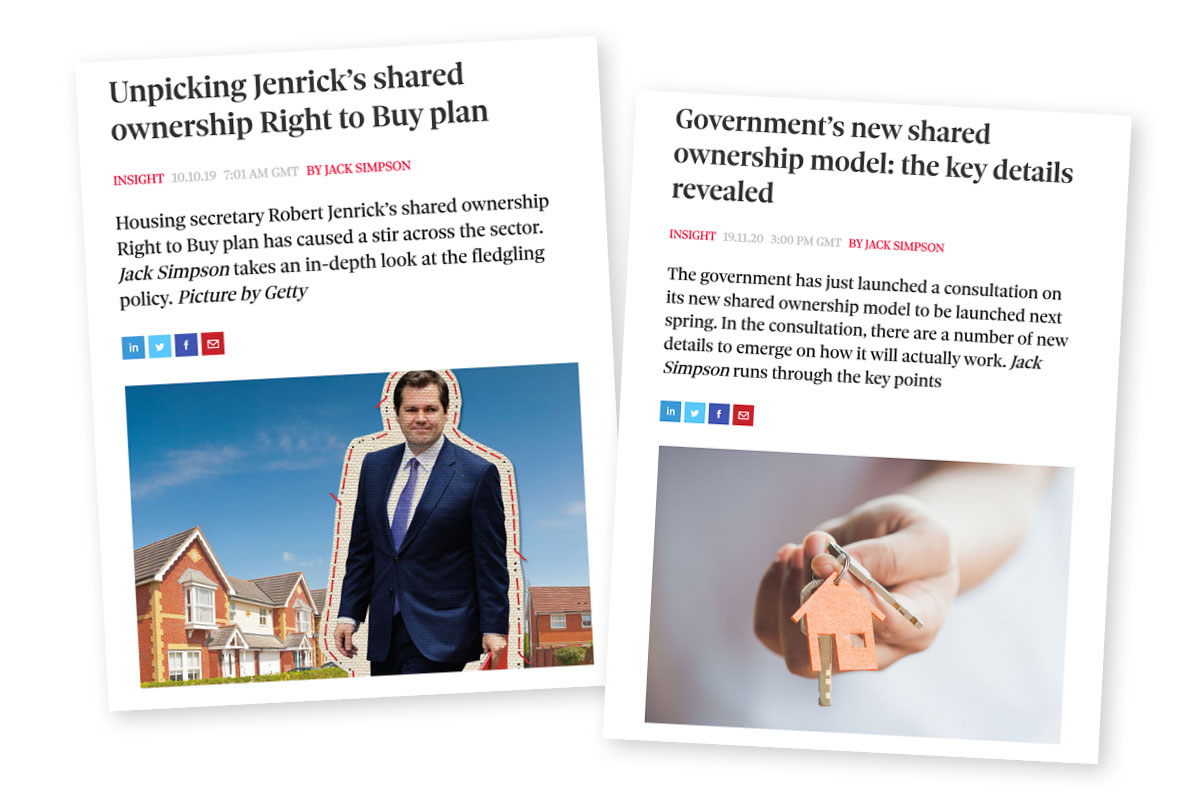You are viewing 1 of your 1 free articles
Are housing providers ready for a radical shared ownership model?
The government has introduced a new model for shared ownership, which includes the ability for people to buy in with a minimum stake of just 10%. But are housing providers and lenders keen to match its radical vision on any kind of scale? Martin Hilditch finds out
Last year, the government ripped up the rulebook for shared ownership.
Making the most significant changes to the tenure in its history, ministers allowed people to buy a minimum stake of just 10% in a home, rather than the previous 25%, and introduced micro-staircasing, so that future shared owners will be able to bunny-hop their way to nirvana in tiny 1% stages.
Following criticism that the existing model lumbers shared owners with unreasonable repair bills, the government also said that more of these costs should be picked up by housing providers for the first 10 years (with occupants able to claim £500 in repairs costs every year). Finally, minimum terms for shared ownership leases funded under the Affordable Homes Programme (AHP) 2021-26 would be increased to 990 years, from a more typical 99 years.
Like a benign version of A Nightmare on Elm Street, the government’s stated aim with the changes is to “make the dream of homeownership a reality for everyone”. It wants to oversee an ambitious expansion of the tenure – with at least half of the 180,000 homes from the 2021-26 AHP made available under the new model for shared ownership. This would represent a massive jump for a tenure which currently houses just 202,000 households – about 1% of the total – according to the English Housing Survey.
The changes do, however, leave a number of significant questions in their wake, ranging from how lenders will react to the new product, to the impact they will have on housing associations’ business plans, and whether it will create a two-tier system with existing shared owners cast into the abyss.
Then there is the bigger philosophical question about whether it is the right thing to do, or whether it risks creating a generation of marginal homeowners who cling on to the window ledge of their 10% shares as
their rent and service charges rise each year.
To get a feel for the outlook, Inside Housing brought together lenders, brokers, housing associations and shared owners to find out how they are updating their plans. Here is what they told us.
How many 10% homes do housing associations plan to deliver?
If the government is anticipating a flood of sales at the 10% minimum stake, it can think again based on the plans of the providers in the room.
Sally Lynch is head of sales at Space Homes, the commercial subsidiary of Yorkshire Housing, which sells “about 250 shared ownership properties a year” and has 1,200 leaseholders. Its new shared owners currently buy an average 35% share of their home. Across its whole shared ownership portfolio, the average stake currently stands at 42%. It is not currently planning for any change as a result of the new model.
“We’re not expecting to see a big downward move or a first share of less than that really,” Ms Lynch states. But the organisation does expect there to be a lot more interest in staircasing at the smaller 1% chunks.
“I think we need to promote and support that,” she states. “I do think there will be a lot more activity in staircasing.”
Kush Rawal is director of residential investment at Metropolitan Thames Valley Housing (MTVH), which currently has 8,500 shared owners across England. The average share purchased by its shared owners varies across different regions, he explains, standing at just 25% currently in London. Broadly speaking, the option of 10% shares are making no difference to MTVH’s modelling at all, he states.
“Overall, from our point of view, we’ve not adjusted our assumptions,” Mr Rawal says. “I think we can sit here and debate around whether or not people will take it [10% shares] up. The truth is, none of us really know.”
Melissa Toomey, director of sales at Heylo, tells a similar story. The average share taken by the provider’s shared owners is currently 44% and it has modelled at first tranche sales of between 35% to 40%.
“That will stay the same,” she states. Like Ms Lynch, she says that Heylo is “particularly keen” to see people staircasing in 1% chunks moving forward.
“I want to make sure my organisation is able to manage that really, really proactively and really encourage people to take up the 1% in a really easy way,” Ms Toomey adds.
While most of the people in the room are planning for little impact from the 10% stakes moving forward, Amy Nettleton, assistant development director – sales and marketing at Aster, says the housing association
has altered its modelling.
The average initial share currently taken up by its shared owners is 43%, although it models for a 40% average in its business planning. Ms Nettleton says that on some sites it will be looking to remodel at 30% to 35% to take into account the ability to offer 10% shares under the new scheme.
Of course, just because people can buy 10% shares, this does not mean it is sensible. The “is this an incredibly dumb policy?” debate is still very live among the housing providers here.
“I have my personal opinion that if you can only afford 10%, should you be buying?” Ms Nettleton states. “We all want things, but we can’t afford them. We have to look at different options. Shared ownership isn’t the right thing for everybody, it really isn’t.”
As mentioned, the housing associations are predicting the ability to staircase in 1% chunks might have a bigger short-term impact on their businesses, with potential challenges around administration of more regular contact with customers.
Sandy Macmillan, managing director of Keaze, acknowledges that this is a potential issue.
“The area I’m really interested in at the moment is to cut the mechanics behind handling some of the transactions,” he explains.
Will the government expect to see a lot of homes sold at those minimum levels? If providers are not planning for that, is this likely to lead to a barney with Whitehall?
According to Ms Nettleton, the government has indicated that it definitely wants to see sales with 10% stakes starting to emerge. But because associations have to make sure they maximise affordability (make sure people buy the largest share they can afford), this is not necessarily going to be easy to deliver.
“It will be interesting to see how this political/provider relationship plays out of what we do with the product and what the guidelines give us to do,” says Ms Nettleton, who also chairs the National Sales Group, an alliance of sales professionals working in the UK sector.
Miranda Foster, senior manager – affordable housing products at Homes England, hints that there is unlikely to be a huge conflict with the sector.
“The aim of this has never been that everybody suddenly buys 10% shares,” she states. “That’s not what it’s for. It’s about getting more people into homeownership. That doesn’t stop it needing to be the right people who can afford the ongoing costs.”
What about lenders’ views of 10% shares?
Emily Machin, head of specialist finance at One Savings Bank (OSB), says it will “watch and see what happens in the market before we make any decisions”.
“But, overall, there is nothing in there that screams out to say we should make any changes or we should pull out of shared ownership [because] it’s going to become more risky. I think broadly the changes are positive. Ultimately, it helps people get on the housing ladder,” she adds.
If anything, Ms Machin suspects we may be about to see an expansion of the shared ownership lending market. This has as much to do with the end of the government’s Help to Buy scheme for first-time buyers in March 2023 as anything else, however.
She says that for OSB, “what we lose in Help to Buy, we will want to make up in shared ownership”.
“So I think that going forward over the next 12 to 18 months, we will revisit our lending policy on shared ownership and understand where we can make improvements, where we can make it more attractive,” she explains. “I think other lenders will do the same.”
Kelly McCabe, managing director of The Mortgage People, which specialises in shared ownership, says the changes under the new model are to be welcomed from the organisation’s point of view.
In fact, like Ms Machin, she thinks the market might expand; although this might actually be counter-productive in terms of accessing lenders with specialist knowledge.
“I think my comment is that we have to be careful what we wish for,” Ms McCabe states. “We have to be making educated statements about lending and not encouraging the markets to become diluted too much – certainly not until such time as shared ownership is a much bigger beast than it is now.”
In numbers
990
Number of years shared ownership property leases will last under the new model
1%
Percentage shared owners will be able to ‘micro-staircase’ their homes under the new model
202,000
Number of shared ownership households in England, according to the English Housing Survey
£500
Amount shared owners will be able to claim in repair costs from housing providers
Do the changes that will see landlords pick up more of the repair costs for the first 10 years address some of the concerns that shared ownership is at best a rip-off and at worst mis-sold to customers?
Sue Phillips, founder of Shared Ownership Resources, an online platform for shared owners and first-time buyers, says the issue of affordability remains a huge concern.
She says she has serious concerns that the affordability for shared owners is too skewed towards the affordability on the day of purchase, and takes too little account of service charge and rent rises that lie further down the line.
“It seems to me that success is measured according to fairly short-term objectives, in terms of access to the tenure,” she explains. “What seems to fall between the gaps is the long-term consequences of the model.”
This is one of the big reasons she is concerned about the new model, Ms Phillips states.
“There are one or two good things in there, but I would say it is largely problematic in terms of the long-term outputs and impact,” she explains.
Homes England’s Ms Foster adds that its affordability guidance makes it mandatory that customers have to get financial advice before embarking on shared ownership “to make sure that the person making the decision about whether this is affordable is a qualified, regulated individual”.
“It’s worth noting that maximising affordability doesn’t mean that you spend every single penny you have on your home,” she states. “The guidelines we gave are between 25% and 45% of your net income.”
Ms Machin says that lenders would also make their own affordability calculations, taking in things like escalating rents or service charges.
Will the changes create a problematic system in which new shared owners get benefits that their counterparts can only dream of?
This is undoubtedly one of the biggest potential problems with the changes. Space Homes’ Ms Lynch states that it is important to look at ways of minimising the differences.
“I would like to think that we are going to be able to apply some of what’s in the new model to some of our existing customers as well,” she states. “That is something we are investigating.”
Sign up for the IH long read bulletin
Already have an account? Click here to manage your newsletters













